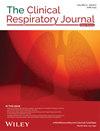This research was aimed to comprehensively investigate the expression levels, diagnostic and prognostic implications, and the relationship with immune infiltration of G2 and S phase-expressed-1 (GTSE1) across 33 tumor types, including lung adenocarcinoma (LUAD), through gene expression profiling.
GTSE1 mRNA expression data together with clinical information were acquired from Xena database of The Cancer Genome Atlas (TCGA), ArrayExpress, and Gene Expression Omnibus (GEO) database for this study. The Wilcoxon rank-sum test was used to detect differences in GTSE1 expression between groups. The ability of GTSE1 to accurately predict cancer status was evaluated by calculating the area under the curve (AUC) value for the receiver operating characteristic curve. Additionally, we investigated the predictive value of GTSE1 in individuals diagnosed with neoplasms using univariate Cox regression analysis as well as Kaplan–Meier curves. Furthermore, the correlation between GTSE1 expression and levels of immune infiltration was assessed by utilizing the Tumor Immune Estimate Resource (TIMER) database to calculate the Spearman rank correlation coefficient. Finally, the pan-cancer analysis findings were validated by examining the association between GTSE1 expression and prognosis among patients with LUAD.
GTSE1 exhibited significantly increased expression levels in a wide range of tumor tissues in contrast with normal tissues (p < 0.05). The expression of GTSE1 in various tumors was associated with clinical features, overall survival, and disease-specific survival (p < 0.05). In immune infiltration analyses, a strong correlation of the level of immune infiltration with the expression of GTSE1 was observed. Furthermore, GTSE1 demonstrated good discriminative and diagnostic value for most tumors. Additional experiments confirmed the relationship between elevated GTSE1 expression and unfavorable prognosis in individuals diagnosed with LUAD. These findings indicated the crucial role of GTSE1 expression level in influencing the development and immune infiltration of different types of tumors.
GTSE1 might be a potential biomarker for the prognosis of pan-cancer. Meanwhile, it represented a promising target for immunotherapy.



